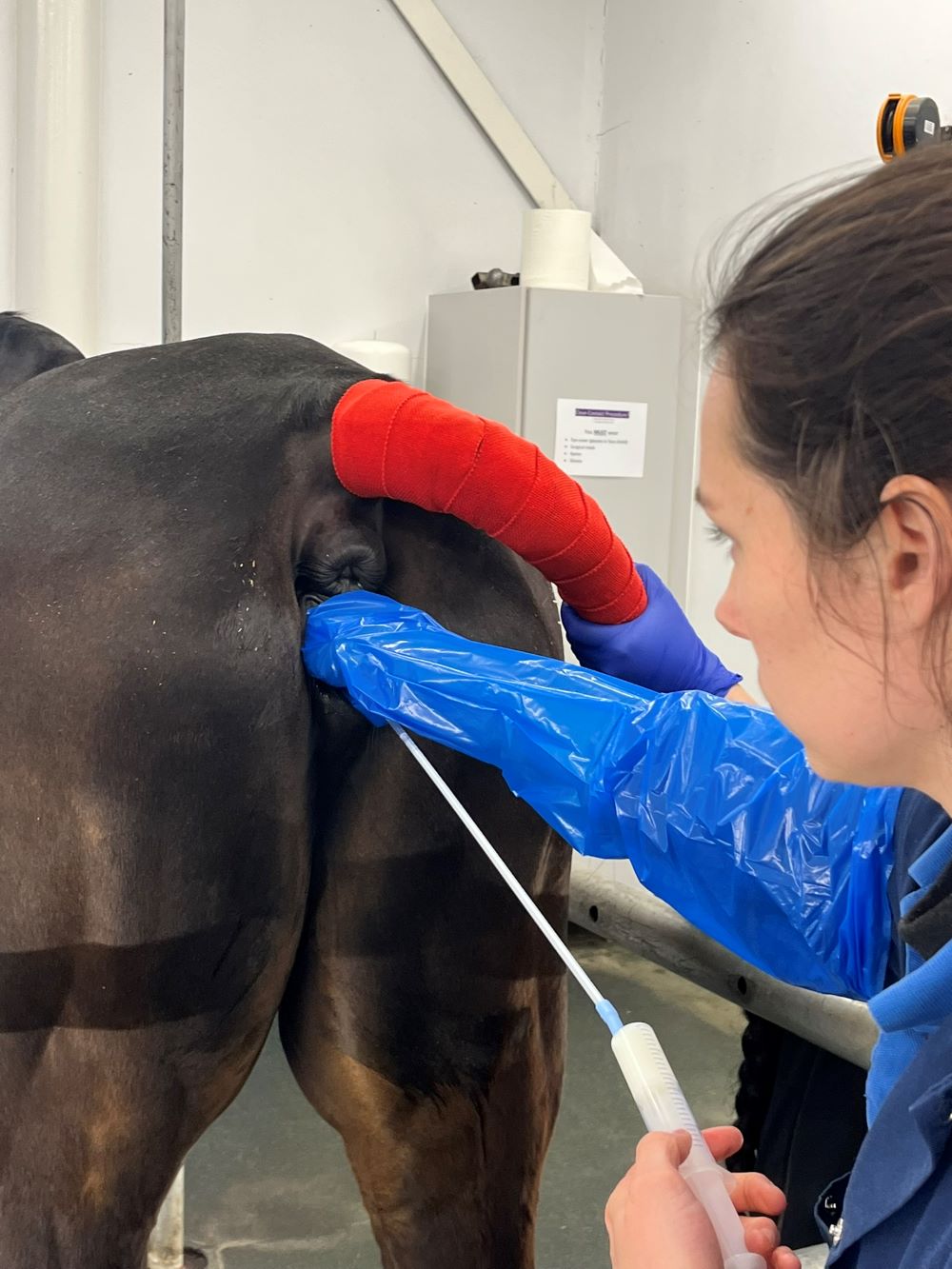24 hour contact: 01707 666297
Equine Artificial Insemination
Mare Support Stallion / Stud Support FAQs
Package Prices Artificial Insemination Embryo Transfer
Equine artificial insemination is now much more common than natural cover for most breeds other than Thoroughbreds (natural cover is still a requirement for the Thoroughbred industry).
 This is because:
This is because:
- You have access to a far wider range of stallions including those abroad (or even deceased stallions if using frozen semen)
- It reduces the risk of injury to the stallion and your mare
- Your mare can be kept locally so you can avoid her travelling her long distances
Equine AI Options
Artificial insemination (A.I.) can be performed with fresh, chilled or frozen semen, and conception rates are usually good. To achieve good conception rates, the mare’s oestrus cycle needs to be monitored carefully. This identifies exactly when to inseminate her (as close to ovulation as possible) to achieve the best results. The mare may also be given hormones to manipulate the cycle to improve success rates.
Using fresh or chilled semen
Ideally, the mare will be inseminated with fresh or chilled semen in the 24 hours prior to ovulation (although many stallions will have semen which will survive for longer than this). This timing, achieved by regular ultrasound scanning of the mare’s uterus, achieves conception rates of around 60%. Older mares or those prone to endometritis are better suited to fresh/chilled semen than frozen.
Good communication with the stallion owner/stud is imperative so:
- Check which days they can collect and send the semen (often dictated by the post or courier service).
- Ask the stallion owner if the stallion’s semen chills and travels well.
- Check if there are transport costs.
N.B. Semen coming from abroad must be accompanied by the relevant health certification
Using frozen semen

Frozen semen can be kept for years and is thawed immediately prior to insemination. It has a shorter life span once thawed than chilled semen and so careful monitoring of the mare’s cycle is required to time insemination much closer to ovulation, achieving conception rates of around 50%. This requires several ultrasound examinations, up to every six hours. Due to the frequency of scans required, including overnight, and the specialised storage of the semen in liquid nitrogen, your mare will need to stay with us for a minimum of 2 nights.
Benefits of using frozen equine semen for AI
- Using stallions from all over the world.
- Using deceased stallions with previously collected semen.
- Using stallions which are still out competing, and not retired to stud yet.
Guidance and tips for stallion selection for AI using frozen semen
- Buy from a reputable stud.
- Ask them about the semen quality and how well that particular stallion’s semen freezes and thaws. How good is the semen motility after thawing?
- Ask how many doses/straws of the semen are included in the price.
Specialist transport of frozen semen is required and this will be arranged by the stud it is being sent from. It should arrive at our hospital before your mare comes into season and will be stored by us in our specialist liquid nitrogen unit
AI FAQs
Where does the artificial insemination of the horse take place?
With chilled semen it can be done on client premises, with frozen it is only at RVC due to health and safety around the semen being stored at -196 degrees in liquid nitrogen and in addition the frequency of ultrasound examinations needing to be performed on the mare prior to insemination
What happens after my mare has been artificially inseminated?
After insemination, your mare will be re-scanned to check for ovulation and any post-breeding problems such as uterine inflammation or fluid. If problems are encountered, post-breeding treatment may be required (e.g. a uterine flush). Scanning for pregnancy (and specifically to check for twins) is then typically performed at day 14-16 post ovulation, and then again at day 28-30 to check for a heartbeat. A 45-day pregnancy scan is also usually performed to make sure everything appears to be progressing normally.

